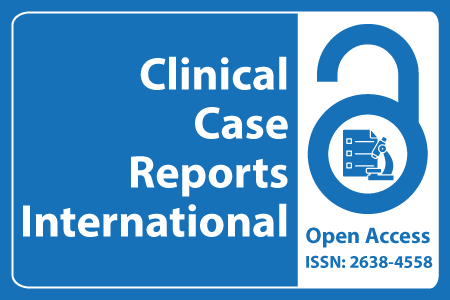
Journal Basic Info
- Impact Factor: 0.285**
- H-Index: 6
- ISSN: 2638-4558
- DOI: 10.25107/2638-4558
Major Scope
- Hepatitis
- Neonatology
- Sleep Disorders & Sleep Studies
- Sleep Medicine and Disorders
- Hypertension
- Tuberculosis
- Sexual Health
- Pain Management
Abstract
Citation: Clin Case Rep Int. 2017;1(1):1009.DOI: 10.25107/2638-4558.1009
Placental Mesenchymal Dysplasia with Fetal Mosaicism – A Case Report
Rui Caetano Oliveira, Zita Ferraz, Catarina Cerdeira and Raquel Pina
Department of Pathology, Coimbra Hospital and Universitary Centre, Portugal
Deparment of Obstetrics, Coimbra Hospital and Universitary Centre, Portugal
*Correspondance to: Rui Caetano Oliveira
PDF Full Text Case Report | Open Access
Abstract:
Introduction: Placental mesenchymal dysplasia (PMD) is a rare lesion, characterized by atypical placental development with placentomegaly, hydropic cystic stem villi formation and anomalous villous stroma and vessels. PMD fetuses are often normal. Because of this characteristics it is important to do the differential diagnosis among gestacional trophoblastic disease, Beckwith Wiedemann syndrome and other placental vascular anomalies. Although PMD is compatible with fetal life, there are more complicated pregnancies that can compromise obstetric outcome. Material and
Methods: We present a case of a 39-year-old female, nulliparous, diagnosed at 12 weeks gestation with a normal fetus and a multicystic placenta. Subsequent ultrasounds found a normal anatomical survey and appropriate fetal growth. Human chorionic gonadotropin (β-HCG) levels were in the usual levels. At 37 weeks, intra-uterine fetal death occurred unexpectedly.
Results: Pathological examination revealed placentomegaly with abnormally large stem villi with cysts and peripheric thick wall vessels with no trophoblast proliferation. Chorionic vessels presented thrombi and fibrinoid necrosis. Immunohistochemistry for p57kip2 showed positivity in tropho blast cells and negativity in stromal villous cells. Necropsy study showed a normal female fetus with signs of anoxia. Mosaicism was diagnosed on amniotic fluid karyotype: 46,XY(18)/46,XX(10).
Conclusion: PMD is a rare entity, probably under diagnosed, but important to recognize in order to perform correct follow-up. It can be associated with adverse pregnancy outcome, IUGR (intrauterine growth restriction), IUFD (intra-uterine fetal death) and preterm delivery (PTD). Women should be counseled regarding these and surveillance heightened. Etiology remains uncertain, being androgenic/biparental mosaicism a possibility.
Keywords:
Fetal growth restriction; Fetal intra-uterine death; Molar pregnancy; Placenta; Placental mesenchymal dysplasia; Stem villous hyperplasia; Mosaicism
Cite the Article:
Oliveira RC, Ferraz Z, Cerdeira C, Pina R. Placental Mesenchymal Dysplasia with Fetal Mosaicism – A Case Report. Clin Case Rep Int. 2017; 1: 1009.













